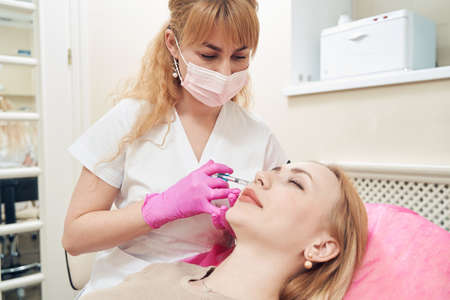Understanding Acne and Scarring in the UK
Acne is a common skin condition that affects millions across Britain, impacting individuals of all ages and backgrounds. While often associated with adolescence, acne can persist well into adulthood, contributing to ongoing concerns about appearance and self-esteem. In the UK, the prevalence of acne is significant, with studies indicating that up to 80% of people aged 11 to 30 are affected at some point. The types of scarring resulting from acne are varied, including atrophic scars (such as ice pick, boxcar, and rolling scars), hypertrophic scars, and post-inflammatory pigmentation. British attitudes towards skin health have evolved in recent years, moving beyond mere cosmetic concern to encompass overall wellbeing and mental health. There is growing awareness and acceptance around seeking professional help for acne and its after-effects, reflecting a broader cultural shift towards open conversations about skin issues and their emotional impact. Understanding these factors is crucial for appreciating the importance of modern medical treatments now available throughout the UK.
2. Pharmaceutical and Prescription Treatments
For many individuals in Britain, pharmaceutical and prescription treatments remain a cornerstone in the management of acne and the prevention of scarring. The NHS, as well as private dermatology clinics across the UK, offer an array of topical and oral medications tailored to suit diverse skin types and the varying severity of acne. Modern advancements have refined these therapies, making them more effective, targeted, and better tolerated for British patients.
Topical Treatments
Topical medications are often recommended as first-line therapy for mild to moderate acne. These include retinoids, such as adapalene and tretinoin, which help promote cell turnover and prevent clogged pores. Antimicrobial agents like benzoyl peroxide or topical antibiotics (e.g., clindamycin) are also commonly prescribed to reduce inflammation and bacterial growth on the skin’s surface.
| Medication Type | Common Examples | Main Function | Availability (NHS/Private) |
|---|---|---|---|
| Topical Retinoids | Adapalene, Tretinoin | Promote cell renewal, prevent clogged pores | NHS & Private |
| Topical Antibiotics | Clindamycin, Erythromycin | Reduce inflammation & bacteria | NHS & Private |
| Benzoyl Peroxide | Acnecide, PanOxyl | Antibacterial, reduces oiliness | NHS & Private (OTC options available) |
Oral Medications
When topical treatments are insufficient or when acne is more severe or widespread, oral medications may be considered. Oral antibiotics such as lymecycline and doxycycline are frequently prescribed by GPs and dermatologists in the UK, helping to control bacterial infection and inflammation over a course of several months.
Oral retinoids, particularly isotretinoin (commonly known by its brand name Roaccutane), represent a powerful option for persistent or cystic acne that has not responded to other therapies. Isotretinoin treatment requires careful monitoring due to potential side effects but is renowned for its effectiveness in achieving long-term remission.
Hormonal Therapies for Female Patients
For women whose acne is linked to hormonal fluctuations—such as those related to polycystic ovary syndrome (PCOS)—oral contraceptives containing oestrogen and anti-androgenic progestins are sometimes recommended. In addition, spironolactone may be used off-label in specialist settings to further suppress androgen-driven sebum production.
Key Points: Tailoring Treatments for British Patients
- The NHS provides clear treatment pathways ensuring safe access to effective medications based on clinical guidelines.
- Private clinics may offer newer formulations or combination therapies not yet widely available on the NHS.
- Cultural considerations such as skin type diversity within Britain are increasingly influencing personalised treatment plans.
- Patient education regarding adherence, potential side effects, and realistic outcomes is prioritised in both public and private sectors.
The evolving landscape of pharmaceutical treatments in the UK continues to bring hope to those affected by acne and scarring. With increasing emphasis on modern innovations and patient-centred care, British patients now have access to some of the most advanced therapies currently available worldwide.
![]()
3. Advanced Dermatological Procedures
In the UK, advanced dermatological procedures have become increasingly popular as effective solutions for both active acne and lingering scarring. Clinics across Britain now offer a range of cutting-edge treatments, each tailored to address specific skin concerns with impressive results and minimal downtime.
Laser Therapy
Laser therapy has emerged as a cornerstone in modern acne and scar management. Fractional lasers, such as Er:YAG and CO2 lasers, are widely available in reputable UK clinics. These devices use focused light energy to stimulate collagen production, smooth uneven skin texture, and reduce redness or pigmentation caused by acne scars. Patients typically experience mild redness post-procedure, but most can resume their daily activities within a few days, making this an attractive option for busy individuals.
Microneedling
Microneedling, also known as collagen induction therapy, employs fine needles to create controlled micro-injuries in the skin. This process triggers natural healing responses, promoting new collagen formation and improving the appearance of scars over time. British clinics often combine microneedling with topical serums or platelet-rich plasma (PRP) for enhanced efficacy. While some redness and swelling may occur initially, recovery is generally swift, with visible improvements developing over several weeks.
Chemical Peels
Chemical peels remain a trusted intervention for resurfacing the skin and addressing both active acne lesions and residual scarring. Clinics in the UK offer a variety of peels—from superficial glycolic acid to deeper trichloroacetic acid (TCA) formulations—tailored to individual skin types and concerns. Results include smoother texture and more even tone, though patients may experience temporary peeling or sensitivity as part of the recovery process.
Radiofrequency Treatments
The integration of radiofrequency technology into dermatology has opened new avenues for non-invasive skin rejuvenation. Devices such as microneedling RF and fractional RF deliver controlled energy beneath the skins surface, tightening tissue and reducing scarring without extensive downtime. British clinics have adopted these treatments for their safety profile and consistent results, with most patients able to return to work soon after their session.
Efficacy and Recovery Considerations
Across all these state-of-the-art interventions, efficacy depends on individual skin characteristics and the expertise of the practitioner. Most patients require multiple sessions for optimal outcomes, but advancements in technology mean shorter recovery times and reduced risk of complications compared to older methods. Consulting with a GMC-registered dermatologist ensures that treatment protocols align with the highest standards of care available in the UK.
4. Emerging Innovations and Technology
The landscape of acne and scar management in Britain is evolving rapidly, with a host of cutting-edge therapies now available or entering clinical trial phases. These advancements are redefining the standard of care, offering hope to individuals for whom traditional methods have been insufficient. Below is an overview of some of the most exciting innovations currently shaping the field:
Light-Based Treatments
Light therapies have become increasingly popular, particularly for their ability to target both active acne and residual scarring without invasive procedures. British dermatology clinics now offer several light-based options, including:
| Treatment Type | Mechanism | Key Benefits | Typical Sessions Required |
|---|---|---|---|
| LED Phototherapy | Uses blue and red LED lights to reduce inflammation and kill bacteria | Painless, suitable for sensitive skin, no downtime | 6-10 sessions |
| Pulsed Dye Laser (PDL) | Targets blood vessels, reducing redness in scars | Quick results, minimal discomfort, effective on post-acne erythema | 2-5 sessions |
| Fractional Laser Resurfacing | Stimulates collagen production by creating micro-injuries in the skin | Smoother texture, reduced scar depth, long-lasting improvements | 1-3 sessions (with downtime) |
Regenerative Techniques
The use of regenerative medicine is also on the rise. Platelet-rich plasma (PRP) therapy, often called the ‘vampire facial,’ harnesses the body’s own healing factors to promote skin renewal. Meanwhile, microneedling combined with growth factors or stem cell serums is showing promise in accelerating tissue repair and minimising scar visibility. These procedures are offered by certified clinics across Britain and are tailored according to individual skin needs.
Bespoke Digital Consultation Services
The digital health revolution has reached dermatology, with UK-based platforms now providing personalised online consultations using artificial intelligence (AI). Patients can upload photos and receive rapid assessments from qualified professionals, who then recommend bespoke treatment plans—sometimes even integrating remote prescription services. This approach not only saves time but ensures that patients in rural or underserved areas can access specialist advice without delay.
Advantages of Modern Digital Dermatology Services in Britain
| Feature | Description | Patient Benefit |
|---|---|---|
| 24/7 Access | Consultations available at any time via web or mobile apps | No need for time off work or long waiting lists |
| AI-Assisted Triage | Automated assessment tools flag urgent cases for priority review | Faster response times for severe symptoms or complications |
| Bespoke Treatment Pathways | Treatments tailored to individual skin type and lifestyle factors | Higher satisfaction rates and improved outcomes |
| Follow-up Monitoring | Regular digital check-ins to track progress and adjust therapies as needed | Enhanced adherence and early identification of side effects or relapses |
The Future Outlook for British Patients Seeking Acne Solutions
The convergence of these technological advances means that British patients now have more choice than ever before. Whether through sophisticated light-based interventions, innovative regenerative techniques, or seamless digital care pathways, individuals are empowered to find solutions best suited to their unique requirements—heralding a new era of personalised acne and scar management in the UK.
5. The Role of the NHS and Private Sector
When it comes to accessing modern medical treatments for acne and scarring in Britain, patients typically navigate between two main healthcare pathways: the National Health Service (NHS) and the private sector. Each offers distinct advantages and limitations, particularly regarding access, affordability, and waiting times.
Access to Acne Treatments: NHS vs Private Practices
The NHS provides a comprehensive range of acne treatments, including prescription medications and referrals to dermatologists for more complex cases. However, due to high demand and limited resources, gaining access to specialist care can involve lengthy waiting lists. In contrast, private dermatology clinics offer swift appointments and a broader selection of innovative therapies, such as advanced laser treatments or medical-grade chemical peels, which may not always be available through the NHS.
Affordability Considerations
Cost is a significant factor for many seeking acne treatment. The NHS offers most services free at the point of delivery, ensuring that financial barriers are minimised. This makes it an invaluable resource for individuals who might otherwise struggle with the cost of ongoing care. Private clinics, while offering faster access and a wider array of options, often require out-of-pocket payments or private health insurance. For some patients, this can be prohibitive, though others may view it as a worthwhile investment for prompt, tailored treatment.
Waiting Times and Patient Experience
One of the most notable differences between the NHS and private sector lies in waiting times. NHS patients may wait several weeks—or even months—for an initial consultation or specialist referral, especially in areas with high demand. Private practices usually provide appointments within days and facilitate immediate commencement of advanced treatments. For those experiencing severe or persistent acne, these timeframes can significantly impact emotional well-being and long-term skin health.
Ultimately, both sectors play essential roles in supporting British patients with acne and scarring concerns. The NHS remains a cornerstone of equitable healthcare delivery, while the private sector complements this by expanding choice and accelerating access to cutting-edge innovations.
6. Patient Experience: What to Expect Before and After Treatment
Understanding the British Patient Journey
For those considering modern medical treatments for acne and scarring in Britain, understanding what to expect at each stage is essential. British clinics typically begin with a thorough consultation, where patients discuss their skin concerns, lifestyle, and treatment goals with a qualified dermatologist or specialist nurse. This initial step often includes digital skin analysis and a review of previous treatments, ensuring that the recommended approach is tailored to each individual’s unique needs.
Pre-Treatment Expectations
Before starting any procedure, patients are guided through realistic expectations regarding outcomes and potential side effects. Clinics provide clear written instructions—such as avoiding certain skincare products or sun exposure—and may advise on preparing the skin with prescribed cleansers or topical agents. The focus is on transparency and patient education, which helps reduce anxiety and ensures everyone feels fully informed before proceeding.
Typical Aftercare Protocols
Aftercare is an integral part of the British approach to acne and scar management. Most clinics offer detailed aftercare leaflets or digital resources outlining how to care for treated skin—these often include gentle cleansing routines, recommendations for fragrance-free moisturisers, sun protection advice, and guidance on when to resume active skincare ingredients like retinoids. Follow-up appointments are routinely scheduled to monitor healing progress and address any post-treatment concerns promptly.
Real-World Testimonials from Across the UK
Many individuals across Britain have shared positive experiences following modern acne and scarring interventions. For example, Emily from Manchester highlights her satisfaction with microneedling: “My dermatologist explained every step beforehand, so I felt reassured. The redness faded within days, and my confidence has soared.” Similarly, James from Bristol reports significant improvement after laser therapy: “The staff were brilliant—they checked in regularly after my sessions. My scars are far less noticeable now.” Such testimonials reflect the high standard of care and patient-centred ethos prevalent in UK dermatology practices.
Overall, British patients embarking on advanced acne or scar treatments can expect a supportive journey—from pre-treatment consultation to comprehensive aftercare—with clear communication at every stage and tangible improvements in both skin health and self-confidence.
7. Looking Ahead: Future Directions for Acne Care in Britain
The landscape of acne and scarring management in Britain is poised for exciting developments, as both scientific innovation and cultural evolution drive the field forward. Emerging research initiatives are increasingly focusing on personalised treatment plans, leveraging advances in genomics and skin microbiome analysis to tailor interventions that address each patient’s unique needs. Clinical trials underway across the UK are exploring novel drug delivery systems, such as microneedle patches and laser-assisted topical therapies, promising greater efficacy with fewer side effects.
Technological Integration and Digital Health
The integration of digital health tools is set to revolutionise acne care. Artificial intelligence-powered apps are being developed to assist patients in tracking their symptoms, monitoring treatment progress, and accessing remote consultations with dermatologists. These technologies offer not only convenience but also a data-driven approach to optimising outcomes, aligning with the NHS’s wider digital transformation strategy.
Cultural Shifts Influencing Treatment Choices
British attitudes towards skincare and self-image are evolving, with greater emphasis on mental wellbeing and destigmatisation of skin conditions. This cultural shift is encouraging more open conversations about acne and scarring, leading to increased demand for holistic care that addresses psychological as well as physical aspects. Clinics across Britain are responding by integrating counselling services and support groups into their treatment offerings.
Sustainability and Ethical Considerations
As sustainability gains prominence in British society, there is a growing expectation for environmentally responsible practices within medical aesthetics. Brands and clinics are prioritising cruelty-free formulations, recyclable packaging, and transparent sourcing of ingredients—trends likely to influence future product development and patient preferences.
In summary, the future of acne and scarring management in Britain will be shaped by a synergy of scientific breakthroughs, digital innovation, cultural openness, and ethical responsibility. Patients can look forward to more effective, personalised, and compassionate care options that reflect both cutting-edge technology and the values of modern British society.


